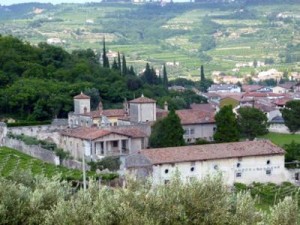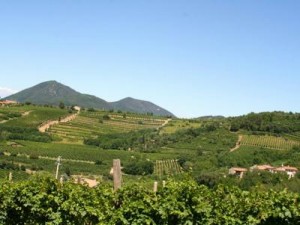
On many visits to Italy to prepare for our Italiaoutdoors active culinary tours, I have the enviable task of visiting various vineyards to find just the right ones to visit for our Italy wine tours.
Our preferred producers are off the beaten path, small, family operated, with product that reflects the traditions of the region. But locating these producers can be a challenge. Here are some of my reflections on exploring the wine regions of Italy.

1) If you are serious about finding small, family run producers, do your homework.
Using wine guides such as Slow Foods, Gambero Rosso, and the internet can help you identify some of these, and learn a little about them. Get their names and street addresses. Keep in mind if you want to taste, you are looking for the cantina. In some cases, the cantina is located at the vineyard, but not always.
Another good place to start is with the Strade del Vino, or Wine Roads, in Italy. These are official routes located in wine regions all over the country. We’ve done several bike rides along these, and there are plenty of wineries all along these routes to visit. They are well marked, and wind their way through the vineyards of a particular region.
2) The local tourist office is a great source of information.
They will have maps and someone who speaks English that can recommend a route. Just take care to check the hours; they are not always open every day, and often only in the mornings.
3) Have a GPS, or at least a really good map.
If you bring your own GPS, make sure it is loaded beforehand with the appropriate maps; your US based GPS may not carry maps of Italy. Don’t rely on internet access in your hotel in Italy to download the maps the night before – my experience is that WiFi there is not particularly reliable.
4) Route numbers in Italy are hard to read, and not always easy to find. Know your route by names of towns.
I note the name of the town I’m headed to, and a couple of major towns between your current location and your destination; then follow the signs to the towns you know are in the right direction. This is when a map, and, even better, a traveling companion that can read a map, come in handy.
5) Larger producers are located along the main streets through the towns, along the base of the hills.
If you are just looking to taste a few wines, and feel most comfortable with someone that speaks English, these may be best for you. They are very easy to spot with large signs, a big building and a parking lot.
6) Smaller producers are located higher up in the hills, so be prepared for narrow roads and lots of turns for Italy wine tours.
They are located in private homes, and they are going about their daily business, not waiting around for customers to arrive. Many do not speak a lot of English, but all seem very happy to introduce me to their wines when I stammer out my few words of Italian.
Approaching one of these for the first time can be a bit intimidating, but well worth the effort when you get a chance to connect with a family who have been doing this for generations.
7) Be aware of the hours of riposo.
After 12pm, and before 4-5 pm, most businesses in Italy close. You won’t be welcome between those hours. Some smaller vineyards I’ve found are only open in the morning.
8) Buy something – even if it is their cheapest bottle.
They often charge 10 euros or so per person for a tasting. They usually have a price list you can ask for, so you can plan what you would like to purchase. These families aren’t making an exorbitant living producing wine, and I like to do what I can to preserve and support their businesses. When we visit one on our Italiaoutdoors tours, we usually buy several bottles or even a case, which we taste later on with the group.
9) Learn to spit.
You are driving in an unfamiliar area up some challenging roads with some aggressive local drivers. You don’t need to finish off that fourth ‘taste’ of an Amarone with 18% alcohol, even if it is fantastic. Learning to spit is a good tip for Italy wine tours.
10) Don’t plan on buying cases to ship back.
Shipping to the US is quite expensive – 17 to 22 euros per bottle of wine. It doesn’t make sense to ship home a case of that 5 euro bottle of basic Bardolino, but perhaps that case of 20 euro Amarone might make sense!
Check beforehand whether your state in the US allows delivery of alcoholic beverages to homes; not all do, and I’d hate for you to pay shipping in Italy just to have your state authorities here in the US turn it away.

Italiaoutdoors is an owner-operated private guide service, creating and guiding active culinary tours in Northeastern Italy.
Unique in their ability to combine active biking, skiing and hiking adventures with world-class culinary programs — including tours with James Beard award-winning chefs — Italiaoutdoors customizes vacations for groups of 4 to 12 people.
Italiaoutdoors has more than 15 years of recreational programming experience in the region (including Italy wine tours), plus formal culinary and wine training.
Programs also include cooking classes, wine tastings, and restaurant dining which explore the best in local regional cuisine and undiscovered wines.
Itineraries are rounded out with city visits, shopping, cultural excursions or just relaxing poolside. The owners — experts in fitness, food, and the region –personally lead each tour.
http://www.italiaoutdoorsfoodandwine.com, 1-978-270-5774. Twitter: @italiaoutdoors Facebook: italiaoutdoors.
